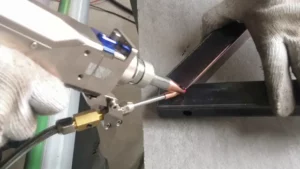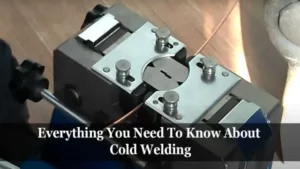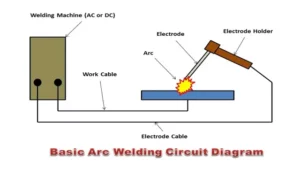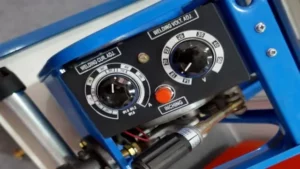Inverter welding machines have revolutionized the welding industry by providing a more efficient and cost-effective solution than traditional welding machines. However, just like any other piece of equipment, these machines can encounter technical issues over time. As an owner of an inverter welding machine, it’s important to know how to repair it to avoid costly repairs and downtime.
In this blog post, we’ll discuss some useful tips on how to repair an inverter welding machine and get it up and running again. So, whether you’re a DIY enthusiast or a professional welder looking for some guidance, keep reading to learn more.
Introduction
If you own an inverter welding machine and it has stopped working, don’t panic! Repairing an inverter welding machine is not very difficult if you know what you’re doing. The first step is to identify the issue. Is the machine not turning on at all? Is it producing insufficient welding power? Once you have identified the problem, you can take steps to fix it.
In most cases, the issue is related to the internal wiring, and you may need to open up the machine to check the connections. If you have experience with electrical repair, this should be a straightforward process. However, if you are unsure about anything, it’s best to consult a professional.
By following these steps, you can easily repair your inverter welding machine and get back to welding in no time. So, don’t worry if your machine stops working – with a little bit of effort, you can fix it yourself.
Explanation about inverter welding machine
Inverter welding machines have been gaining popularity in recent years, thanks to their versatility and efficiency. This type of welding machine uses inverter technology to convert AC power to DC power, which then allows for more precise control over the welding arc. Unlike traditional transformer-based welding machines, inverter welding machines are smaller, lighter, and much more portable.
They are also more energy-efficient, as they require less power to operate, which can result in significant cost savings over time. With an inverter welding machine, users can easily switch between welding different types of metals, making it an extremely useful tool for those who need to work with a variety of materials. Overall, the inverter welding machine is a powerful yet compact tool that any professional welder or DIY enthusiast can benefit from.

Troubleshooting
If you’re dealing with an inverter welding machine that’s not functioning correctly, don’t worry. With a few troubleshooting steps, you can often fix the issue on your own. Begin by checking the power connection and making sure the machine is plugged in properly.
Check the fuse, and if it’s blown, replace it. If the machine is still not working, check for any loose wires or connections. Sometimes, a faulty breaker can be the culprit, so be sure to check that as well.
Once you’ve eliminated these common issues, you can move on to more complicated solutions. If you’re still having problems, it’s best to bring in a professional to repair your inverter welding machine. With some patience and persistence, you’ll be back to welding in no time!
Identifying the problem
When it comes to troubleshooting, the first step is identifying the problem. This may seem obvious, but it’s important to approach the situation with a clear mind and a systematic approach. Start by gathering as much information as possible about the issue.
What specifically is not working or causing the problem? Is there an error message or code that can provide additional details? Once you have a clear understanding of the problem, begin investigating potential causes. Consider any recent changes or updates that may have impacted the system. It may also be helpful to consult with colleagues or research similar issues online.
By taking a thorough and methodical approach, you can better pinpoint and solve the problem at hand.
Checking power input and wiring connections
When it comes to troubleshooting issues with your electrical equipment, one of the first things you should check is the power input and wiring connections. Faulty wiring connections can cause a wide range of problems, from equipment failure to electrical shocks. So, before you start tearing things apart, make sure that all of your electrical connections are secure and properly grounded.
Check your power input as well, as it could be the source of your problem. Make sure that your equipment is compatible with your power supply, and that you’re not overloading your electrical circuits. If you’re not sure how to check your wiring or power supply, consult an electrician or a qualified technician who can help you diagnose and fix any issues.
By taking the time to check your power input and wiring connections, you can avoid more complex problems and ensure that your electrical equipment is running safely and smoothly.
Testing individual components
When it comes to troubleshooting, testing individual components is an essential step. It allows you to isolate and pinpoint the specific source of the problem, making it easier to fix. To do this, you’ll need to have a basic understanding of the system and how it works.
Start by identifying the component that is showing symptoms of dysfunction and ruling out any obvious causes such as loose connections or damaged wiring. Then, test the component using a multimeter or other appropriate testing tool. Look for readings that fall outside of the acceptable range and compare them to the manufacturer’s specifications.
By testing individual components, you can avoid wasting time and resources attempting to fix the wrong problems. Remember, troubleshooting is all about taking a systematic approach to problem-solving and being patient. With a little persistence, you can solve even the most complex problems and keep your systems running smoothly.
Repairing the Inverter Welding Machine
If you own an inverter welding machine, chances are you might encounter some issues with it along the way. Luckily, most of these issues can be resolved with some basic repair work. First and foremost, before attempting any repair work, make sure to unplug the machine and discharge any capacitors to avoid any electrical hazards.
One of the most common issues with inverter welding machines is the failure of the output circuit. Check the capacitors, diodes, and transistors in the output circuit to see if they are burnt or have gone bad. In some cases, replacing faulty components might be all that’s needed.
Another issue is overheating, which is usually caused by insufficient ventilation or a faulty fan. Make sure the cooling system is working properly and double-check for any blockages. In some cases, the fan might need to be replaced.
By following these simple steps, you can easily repair your inverter welding machine and save yourself the cost of buying a new one.
Replacing damaged components
When it comes to repairing an inverter welding machine, one of the most common issues is damaged components. From faulty circuit boards to broken wires, a damaged component can quickly bring your welding machine to a standstill. The good news is that replacing these components is often a straightforward process that can be done without the need for advanced technical skills.
The first step is to identify the damaged component and source a replacement part. This can often be done by consulting the manufacturer’s manuals or by speaking with a professional technician. Once you have the replacement part, simply remove the damaged component and install the new one.
It’s important to take your time during this process and ensure that everything is connected correctly. With the right replacement part and a little bit of know-how, your inverter welding machine will be up and running in no time!
Repairing damaged circuits
Inverter welding machines are essential tools for welding professionals, but they can become damaged over time due to usage or accidents. When repairing damaged circuits on an inverter welding machine, it’s important to first identify the root cause of the problem. This can involve a thorough inspection of both the hardware and software components, including the circuit board and any wiring or components that may have become loose or damaged.
Once the issue has been identified, a skilled technician can then begin the repair work, which can involve everything from soldering new components to replacing damaged wires or connectors. Whether it’s a simple fix or a more complex repair, restoring a damaged inverter welding machine requires patience, skill, and an attention to detail. By taking the time to properly identify and address any issues, welding professionals can ensure that their equipment is in top working condition for years to come.
Replacing faulty fuses and capacitors
Repairing an inverter welding machine can help save money compared to buying a new one. One common issue with these machines is faulty fuses or capacitors. Fuses protect the circuits from overheating and burning, while capacitors store energy to help regulate voltage.
If either of these components is damaged, the machine may fail to start or work properly. Luckily, replacing faulty fuses and capacitors is a simple fix that can be done by most people. However, it’s important to ensure that the replacement parts are the same rating as the originals.
It’s also important to safely discharge any stored energy from the capacitors before replacing them to avoid electric shock. By following these steps, repairing an inverter welding machine can be an easy and cost-effective solution.
Preventing Future Issues
If you want to prevent future issues with your inverter welding machine, it’s important to properly maintain it on a regular basis. One of the first things you can do is keep the machine clean and free of debris. This will help to prevent dust, dirt, and other particles from clogging the machine’s internal components, which can cause it to overheat or malfunction.
Another important step is to regularly check the cables and connections for any signs of wear or damage. This is especially important for the ground cable, which can become corroded over time and lose its ability to properly ground the machine. Finally, it’s important to use the machine according to the manufacturer’s instructions and to avoid overloading it with too much current.
By taking these steps, you can help to ensure that your inverter welding machine functions properly for years to come.
Regular maintenance and cleaning
Regular maintenance and cleaning are integral parts of preventing future issues in any system, and your home heating and cooling system is no exception. Neglecting regular maintenance and cleaning can lead to issues down the line, like clogs, leaks, and other malfunctions. One way to prevent future problems is by cleaning or changing your air filters regularly.
Dirty air filters restrict the airflow, leading to your system working harder and using up more energy than necessary. Another essential task is to clean the outdoor unit, removing dirt and debris that have accumulated over time. Dirt and debris block airflow, reducing your system’s efficiency, and causing it to wear out faster.
It’s also crucial to schedule regular maintenance checks with a qualified technician to identify any minor issues before they develop into larger problems. Regular maintenance and cleaning help keep your home heating and cooling system running efficiently, prolonging its lifespan and saving you money on energy bills.
Avoiding overuse and overheating
Overusing and overheating electronic devices can cause damage and even shorten their lifespan. However, there are easy steps you can take to prevent future issues. Firstly, make sure to give your device breaks by powering it off or placing it in sleep mode when it’s not in use.
This will allow it to cool down and prevent overheating. Secondly, avoid keeping your device plugged in all the time, as this can cause the battery to degrade faster. Finally, be conscious of the apps and software you use, as some may be more resource-intensive than others.
By taking these simple precautions, you can extend the life of your device and prevent future issues from arising.
Conclusion
In conclusion, repairing an inverter welding machine may seem daunting, but it can be accomplished with the right tools and knowledge. Whether it’s a faulty power supply or a damaged circuit board, the key is to identify the issue and replace or repair the faulty components. And remember, there’s no need to panic when your welding machine goes on the fritz – just follow these steps and you’ll be back to welding in no time.
So put on your safety gear, grab your tools, and get ready to repair that inverter welding machine like a pro!”
FAQs
What are the common problems with an inverter welding machine?
Some common problems with inverter welding machines are overheating, shorts in the circuit board, or a faulty power source.
How do I troubleshoot an inverter welding machine that won’t power on?
Check the power outlet and ensure it is functional. Inspect the fuses and wiring for any damages. Verify if the power switch is turned on. If all of these are fine, the problem might be inverter or the control circuit.
Can I repair my inverter welding machine myself?
In most cases, it is not recommended for individuals to repair their inverter welding machines unless they have experience and training. Attempting to repair it yourself can lead to further damage and potentially dangerous electrical shocks.
How often should I service my inverter welding machine?
It is recommended to service an inverter welding machine after every 100 hours of usage. If you use your machine more frequently, service it more regularly.
What types of repair services are typically required for an inverter welding machine?
Common repair services include circuit board replacement, control module replacement, overheating issues, and power source replacements.
How can I prevent my inverter welding machine from overheating?
Ensure that the machine is adequately ventilated and not blocking any air vents. Avoid overloading the machine and using it for prolonged periods without breaks.
How do I know if I need to replace my inverter welding machine?
If your inverter welding machine is continuously malfunctioning even after multiple repairs, it might be time to replace the machine. Additionally, if the cost of repair is more than a new machine, it is recommended to invest in a new one.






